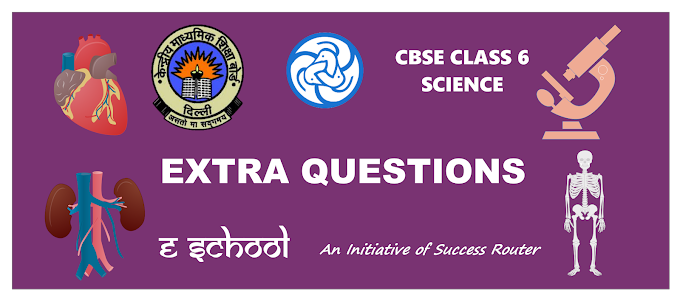Question 1.
Name the plant from which jute is obtained. From which of its part do we get jute?
Answer:
Jute is obtained from ‘Putson’. It is obtained from its stem.
Question 2.
Which parts of these plants have fibres?
- (a) Cotton
- (b)Mango
- (c) Coconut
- (d) Banana.
Answer:
- Cotton – seeds
- Mango – seeds
- Coconut – fruits
- Banana – leaf.
Question 3.
Name the country which invented cotton clothing.
Answer:
India.
Question 4.
In which states of India, cotton is grown?
Answer:
Cotton is grown in Maharashtra, Gujarat, Punjab, Rajasthan, Tamil Nadu and Madhya Pradesh.
Question 5.
In which states of India, jute is cultivated?
Answer:
West Bengal, Bihar and Assam are the main producers of jute in India.
Question 6.
Which method is used to harvest cotton from the plants?
Answer:
Hand picking.
Question 7.
What is ginning?
Answer:
Ginning is the process of separating cotton fibres from its seeds.
Question 8.
What are bales?
Answer:
Raw cotton fibres are compressed into bundles of approximately 200 kg. These compressed cotton bundles are called bales.
Question 9.
Which type of soil is the best for the cultivation of cotton?
Answer:
Black soil.
Question 10.
Which type of soil is best suited for jute crop?
Answer:
Alluvial soil in the delta regions of rivers like the Ganga and the Brahmaputra are the best for the cultivation of jute.
Question 11.
In which season, jute (putson) is cultivated?
Answer:
Rainy season.
Question 12.
What are the uses of cotton?
Answer:
Cotton has a variety of uses. Some uses of cotton are given below:
- Cotton or cotton in combination with other fibres is used in manufacture of textiles.
- Cleaned cotton is used as an absorbent in hospitals.
- Unspun cotton is used ,as fillers in mattresses, pillows and quilts.
- Cotton is used as a main raw material in manufacturing of rayon and in paper industry.
- Due to high water absorption property, clothes made from cotton are extensively used as mops in household and for cleaning machines in industries.
Question 13.
Explain various steps in the manufacture of cotton fabric from cotton.
Answer:
Important steps in the manufacture of cotton fibres are as described below:
- Cotton is hand picked from the plants.
- Ginning: The picked cotton is taken to godowns where the seeds are pulled out of the cotton by steel combs.
- Bailing: Ginned cotton is compressed tightly into bundles weighing approximately 200 kg called bales.
- Raw cotton from bales is cleaned from straw and dried leaves, combed and straightened and finally converted into rope like strand called sliver.
- Spinning: To make this strand into yam strong enough for wearing, it is pulled and twisted.
- Yarn is wound on big reels called ‘bobbins’. These bobbins of yam are subjected to weave for making cloth.
- Weaving: Weaving from yam is done in the looms.
- Bleaching and dyeing: Fabric made in the loom is grey in colour. The fabric is now bleached and dyed at a finishing plant.
Question 14.
In which season is cotton planted? What is its course of growth?
Answer:
It is planted early in the spring. Cotton plants grow steadily and soon become bushes of 3 to 6 feet high. After about 2 months, they bear white or yellowish flowers which turn pink or red after a few days. The petals of the flowers fall, leaving behind tiny green seeds. This later grows into spherical-shaped structure of the size of a walnut, which is called cotton boll. As the cotton bolls grow steadily, the seeds and the fibres grow inside. On maturing, the green bolls begin to turn brown. On complete maturation, they become ready to burst open, exposing the white fibres. As the fibres dry in the sun, they become fluffy.
Question 15.
Why are jute plants cut at flowering stage and not on complete maturation?
Answer:
Jute plants are cut at the time of flowering stage because a good quality of fibre is obtained at this stage. On complete maturation of plant, fibres of its stem become very hard.
Question 16.
What are the important uses of jute?
Answer:
- Jute is extensively used for making gunny bags, potato sacks, carpets, curtains, coarse clothes and ropes, etc.
- These days, fine quality of jute is also used for making jute fabrics.
Question 17.
What is retting? Explain how fibres are obtained from the jute plants.
Answer:
Jute plants are cut at the flowering stage when plants are 8-10 feet high. The cut plants are grouped at different places in the field for a few days when most of the leaves dry up and fall down. The plants are now tied into small bundles. The bundles are made to sink in stagnant water of a pond for a few days and then the gummy skin rots out to separate fibres. This process is called ‘retting’. Fibre is extracted from the retted jute by hand, with jerks and pulls. The.dried fibres are then tied together in small bundles.


0 Comments